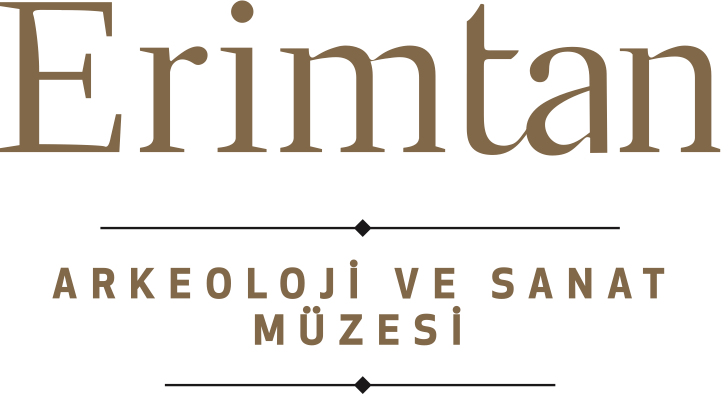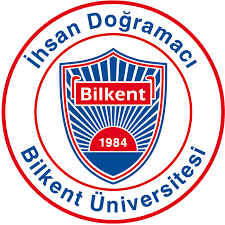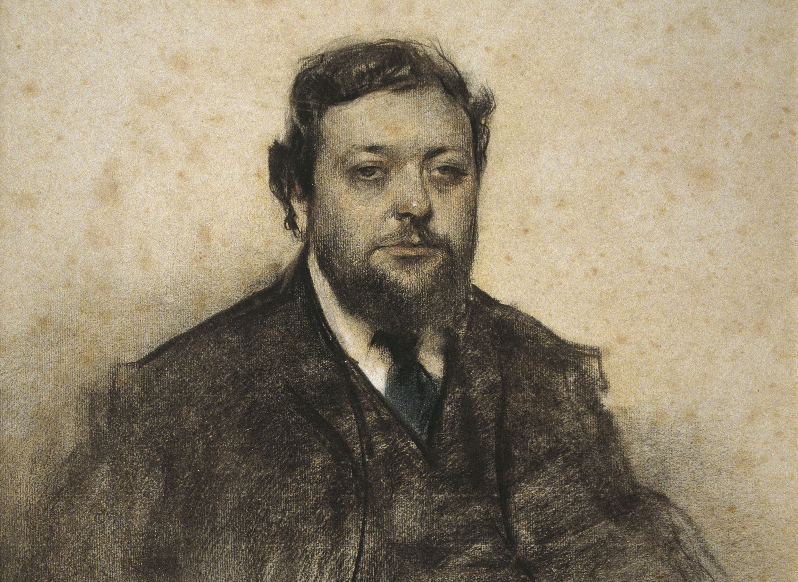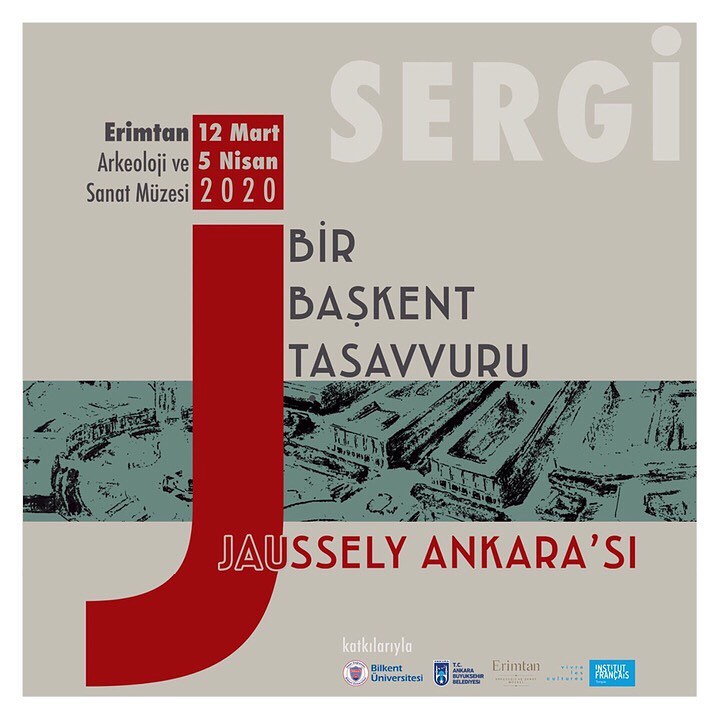SERGİ: BİR BAŞKENT TASAVVURU, JAUSSELY ANKARA’SI
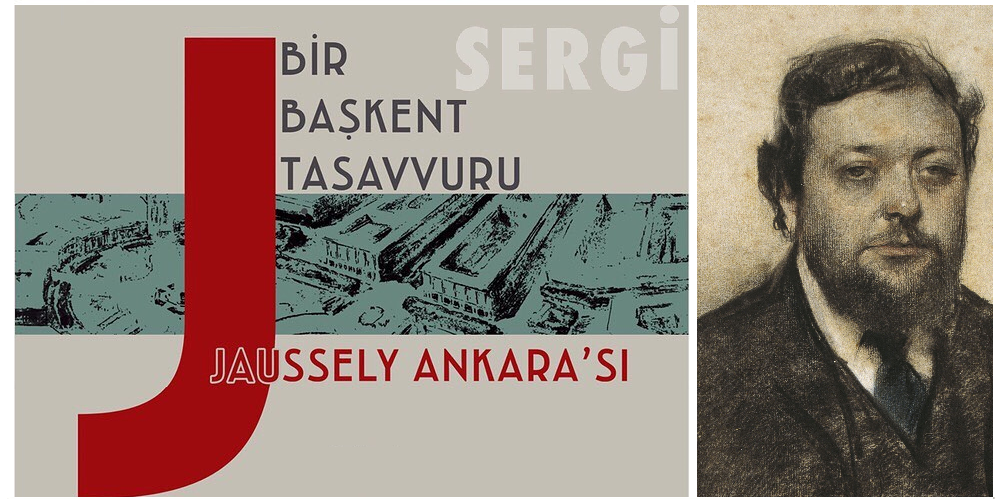
12.03.2020 - 18:30
05.04.2020 - 18:00
Panel
SERGİ: BİR BAŞKENT TASAVVURU, JAUSSELY ANKARA’SI
“Bir Başkent Tasavvuru: Jaussely Ankara’sı” Sergisi 12 Mart – 5 Nisan 2020 tarihleri arasında Erimtan Arkeoloji ve Sanat Müzesi’nde…
Bilkent Üniversitesi öncülüğünde Ankara Büyükşehir Belediyesi, Erimtan Müzesi ve Institut français desteğiyle hazırlanan sergi;
Erken Cumhuriyet döneminde Başkent Ankara’nın; mimar-şehirci Leon Jaussley’nin meslek üslubundan yola çıkarak, dönemin şehir kültürü ve imar planı yarışmasına dair gün yüzüne pek az çıkmış bilgi ve belgelerine yaslanmakta, uzun soluklu kentsel deneyimlerin ve çalışmaların rehberliğinde, kurulan ve derlenen parçalarla Ankara’yı ve ‘Başkent’ in gerçekleşmemiş hikayesini yansıtmaktadır.
Fransız Devlet Arşivlerin’den elde edilen görsellerin kullanıldığı sergide sanatçı Aslı Gibidir’in ”Tasavvur” isimli enstalasyonu, Jaussely Ankara’sını hayal etmektedir.
Sergi, 12 Mart – 5 Nisan 2020 tarihleri arasında Pazartesi hariç her gün 10:00-17:00 saatleri arasında Erimtan Müzesi süreli sergi alanında ziyaret edilebilir. @jausselyankara
PANEL: ERKEN CUMHURİYET DÖNEMİ ANKARA’SI VE LÉON JAUSSELY
Panel
Mart günü Erimtan Müzesi’nde başlayan “Bir Başkent Tasavurru: Jaussely Ankara’sı Sergisi” ne, Ankara, Erken Cumhuriyet Dönemi ve mimarisine, Jaussely’nin meslek yaşamına ve İkinci Ankara İmar Planı’na ışık tutacak, çok değerli akademisyen ve uzmanların katılımıyla gerçekleşecek olan uluslararası bir panel… 20 Mart 2020 tarihinde yine Erimtan Müzesi’nde günübirlik bir yolculuk… Bu panelden genel anlamda beklentimiz, Başkent Ankara’nın erken kentsel gelişim sürecinden ve imarından bazı dersler çıkarmak ve gelecek için sonuçlara varmak, Ankara üstüne düşünmek ve yeni sorular sormak olarak özetlenebilir.
Konuşmacılar:
- İlhan Tekeli, Orta Doğu Teknik Üniversitesi
- Bülent Batuman, Bilkent Üniversitesi
- Jean-François Pérouse, İstanbul Anadolu Araştırmaları Enstitüsü (IFEA)
- Sinan Logie, İstanbul Bilgi Üniversitesi
- Deniz Altay Baykan, Bilkent Üniversitesi
- Alexandre Kazerouni, École normale supérieure, Paris
Leon Jaussely and Ankara in the Early Republican Period
This international panel, with participations of outstanding academicians and researchers, will underline Jaussely’s professional career and evidently will highlight 1927 Competition on Master Planning of Ankara on which we have opened an exhibition at Archaeology and Art Museum of Erimtan last week. A daily journey on March 20, 2020 at Erimtan Museum in Ulus…
In a broad sense, we anticipate from this Panel to derive some lessons out of early Republican development process and master planning of Ankara, and to predict some outcomes for the future. It is a quick resume of reconsidering Ankara, urban planning, socio-spatial developments, planning history, and architecture.
İlhan Tekeli
Our keynote speaker İlhan Tekeli discusses what new questions might be that we expect from the Panel, and what kind of new paths can be defined while writing the planning history in our century. He questions future and process of master planning of the Capital City by filtering his life time academic, professional, and social experiences through lenses of Ankara.
Bülent Batuman
Batuman focuses on roles of public space while new Ankara had been recreated during the Early Republican era. He discusses transformative social impacts, political capacities of a public space, and power of spatial identity. Batuman presents how politics of space and Republican identity of Ankara were evolved and questions how public space was reproduced in urban daily life till today.
Jean François Pérouse
“A Systematic Experience on Understanding/Interpreting Contributions of French Architects and Planners in Ankara of the Early Republican period” Pérouse aims at forming a holistic framework for all individual studies and efforts of French architects and planners during Ankara’s process of being capital city. He claims that business connections of diplomats, politicians, and rofessionals. Pérouse departs from French archives, being grounded on Jaussely, Leveau, Laprade and Lambert, and opens up a discussion on changing social context and working conditions of French
architect-urbanists in the Early Republican period.
Sinan Logie
‘’On the traces of European architects in Ankara’’ The foreign architect’s legacy in Ankara is an important cultural heritage, symbolizing the long-term exchanges between Europe and Turkey. By its geographical position, the territory of contemporary Turkey has been, for millennia, at the crossing of different civilizations and cultures. The historic sediments of these various and rich influences are embodied in various fields. Among them Architecture is probably one of the most preeminent, due to its duration through space and time. Effectively, from Antiquity to the byzantine period, or from the Ottoman architecture to the modern and contemporary architectures, the vast landscape witnesses the cultural exchanges between European Culture and the Eastern one. At the founding of the Turkish Republic, in 1923, Mustafa Kemal Atatürk strengthened the implementation of European cultural models. Basing the new constitution on the Swiss model, the founder of the Republic relocated the state’s capital from Istanbul to Ankara, marking an abrupt shift with the Ottoman tradition. In the line of the postworld war 1 nation states in Europe, the Monumental Modernist language became the dominant tool in urban planning and architecture. In this frame, Ankara’s first Master plans were designed by German professionals, in 1924 and 1932, respectively by Carl Christoph Lörcher (1884-1966) and Hermann Jansen (1869-1945). One of the most prolific personalities, of the republic’s early years in Ankara, is without doubt the
Austrian architect Clemens Holzmeister (1877-1956). Holzmeister’s work in Ankara includes16 buildings, among which we can underline the most, symbolic and iconic one: The Turkish Parliament (1938-1963). Around the 1930’s, due to the rise of Nazism in central Europe, many European architects immigrated to Turkey due to their political or religious positions. Beyond their imprint on Ankara’s urban fabric, these personalities also had key position in the Turkish Architectural academic system, and shaped an important part of the 20th Century’s architectural trajectory in Turkey.
Deniz Altay Baykan
“Jaussely vs Ankara …” Baykan mentions how initial idea of the exhibition and panel were come up, summarizes when her way crosses with Jaussely’s and Jaussely’s with Ankara where she had lived and done academic studies for years. Baykan follows and presents traces of Jaussely’s master plan proposal and context of 1920s while capital city had been founded, 1927 Competition in particular, for recent Ankara.
Alexandre Kazerouni
Urban Planning, Modernist Architecture and Social Change: Comparing Ankara and Tehran between 1925 and 1939. This presentation will aim an introducing comparison at a regional level, between Tehran and Ankara, during the period of time Jaussely proposed a plan for the Turkish capital city. It will stress some social dynamics happening in Tehran in link with the rise of a new modernist urbanism in the Iranian capital city, at that period of time that present formal similarities with Ankara. It will also sum up the current dynamics in Tehran that consists in preserving and transforming into national heritage or new public spaces the architectural traces of that period of modernist architectural experience.
